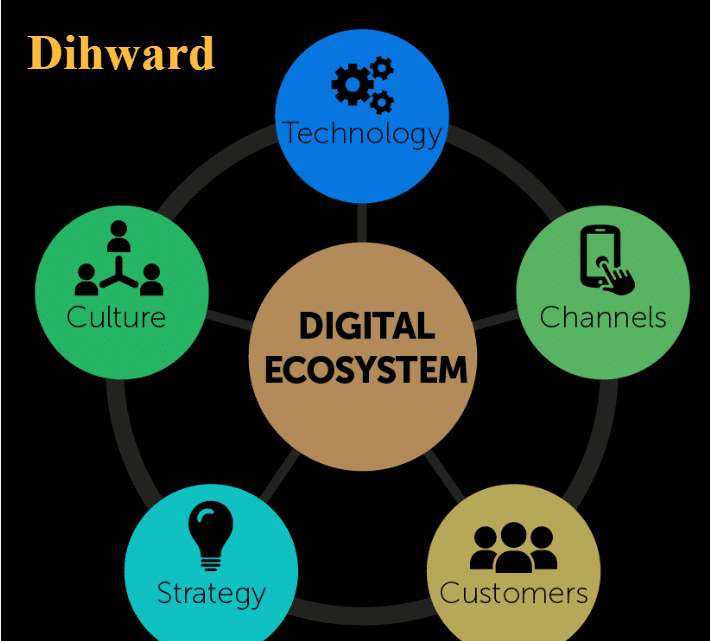The Role of Image Recognition in the CPG Market for Retail Shelf Monitoring

Imagine a consumer walking into a store, searching for their favorite beverage, but finding the shelf empty. The product is out of stock, and just like that, a sale is lost—not to mention the potential hit to customer loyalty.
This scenario is all too common for CPG brands, especially when relying on outdated methods of inventory management. It leads to stockouts, misplaced products, and poor shelf visibility. This is where image recognition technology comes into play, offering an AI-powered solution to these pressing issues.
The global image recognition in CPG market was valued at approximately $2 billion in 2023 and is projected to reach $8 billion by 2032, reflecting a compound annual growth rate (CAGR) of nearly 17% during this period. This highlights the increasing adoption of AI technologies to optimize shelf monitoring and improve retail execution.
In this article, we will delve into how image recognition is transforming retail shelf monitoring for CPG brands, examining its applications, the technology behind it, and how it is helping brands overcome these in-store challenges to boost sales and enhance retail execution.
What is Image Recognition Technology?
Image recognition is a technology that allows machines to interpret and analyze visual inputs, mimicking the human ability to identify objects, patterns, and features in images. It works through deep learning models, specifically trained neural networks, which can recognize product labels, packaging, shelf placements, and even pricing information from photos or video feeds.
When the system is fed with thousands of labeled images of products, the technology learns to identify different objects, making it an invaluable tool in retail operations. With image recognition in CPG markets brands can continuously monitor shelves, detect discrepancies, and ensure compliance without needing human intervention for routine checks.
Current Applications in Retail Shelf Monitoring
Effective retail shelf monitoring is essential for CPG brands to ensure their products are available, visible, and placed according to plan. By automating the tracking and analysis of in-store conditions, brands gain real-time insights that can directly enhance retail execution and boost sales. Below are some of the key areas where image recognition is making a significant impact.
Product Availability and Stock Levels
Maintaining consistent product availability is a critical concern for CPG brands, as stockouts can lead to lost sales and customer dissatisfaction. Image recognition technology addresses this challenge by providing real-time tracking of stock levels. Cameras and sensors placed on shelves can detect stockouts or misplacements instantly, alerting store managers to take action and restock items before the situation affects sales.
For example, ParallelDots’ ShelfWatch uses image recognition to automatically monitor shelves, flagging missing or misaligned products and ensuring that stock levels are constantly optimized to meet customer demand.
Planogram Compliance
Adhering to planograms is key for CPG brands to maintain product visibility and brand consistency across retail locations. Image recognition automates the process of verifying planogram compliance by checking whether products are displayed as per the pre-approved layout. This ensures that high-demand items are placed at eye level, promotional products are in prime locations, and the overall layout aligns with the brand’s standards.
Tools like ShelfWatch provide brands with detailed insights into planogram compliance. They identify discrepancies in real-time and allow brands to take immediate corrective actions, eliminating the need for manual audits.
Promotional Display Analysis
Promotions are vital for driving sales, but only if they are executed correctly. Image recognition helps CPG brands track the success of promotional displays by ensuring that they are set up as intended. This includes checking if promotional signage is visible, products are correctly placed, and pricing is accurate.
During promotional periods, real-time monitoring allows brands to identify and correct issues such as missing displays or incorrect pricing before they impact sales, optimizing promotional effectiveness.
With image recognition offering valuable insights into product availability, planogram compliance, and promotional execution, it is now time to explore the advanced features and emerging trends in retail shelf monitoring that are shaping the future of this technology.
Advanced Features and Emerging Trends
Image recognition, powered by AI and machine learning, is no longer a standalone solution but is increasingly integrated with other advanced systems like IoT and cloud computing. These innovations not only enhance the accuracy and speed of image recognition but also provide CPG brands with a comprehensive, real-time view of their in-store execution across multiple locations. Below, we explore some of the advanced features and emerging trends that are shaping the future of AI-powered shelf monitoring.
Integration with IoT and Cloud Computing
The integration of image recognition with Internet of Things (IoT) devices and cloud-based systems has expanded its potential in retail shelf monitoring. Cameras and sensors connected to the IoT can capture visual data continuously, sending it to the cloud for instant processing and analysis. This allows for large-scale monitoring across multiple store locations, providing CPG brands with a comprehensive view of their retail execution.
With cloud computing, brands can access data from anywhere, making it easier for managers to track store performance in real-time and take immediate action when issues arise. ShelfWatch, powered by ParallelDots, seamlessly integrates with cloud platforms, providing brands with actionable insights based on real-time data.
AI and Machine Learning Enhancements
AI and machine learning continue to enhance image recognition systems, making them more accurate, faster, and smarter. With continuous learning capabilities, these systems improve over time, enabling them to detect new products, identify changes in store layouts, and adapt to variations in the retail environment.
AI-enhanced image recognition tools can analyze item positioning based on changing consumer trends, making dynamic adjustments to optimize shelf space and ensure that the most popular or relevant products are prominently featured. This ensures that brands are always aligned with the latest trends, consumer preferences, and promotional strategies.
Real-Time Analytics and Decision Making
In retail, speed is of the essence. Image recognition technology, combined with real-time analytics, empowers CPG brands to make data-driven decisions immediately. For example, if a product is misaligned or out of stock, store managers can receive immediate notifications through their mobile devices, prompting corrective action.
The ability to act instantly ensures that brands can avoid the detrimental effects of stockouts, misplaced products, and missed promotional opportunities. With real-time monitoring, the decision-making process becomes faster, more accurate, and more effective, contributing to higher in-store performance.
Addressing Challenges and Limitations
Retail shelf monitoring is evolving rapidly with new technologies and integrations. Image recognition, powered by AI and machine learning, is no longer a standalone solution but is increasingly integrated with other advanced systems like IoT and cloud computing.
These innovations not only enhance the accuracy and speed of image recognition but also provide CPG brands with a comprehensive, real-time view of their in-store execution across multiple locations. Below are some of the advanced features and emerging trends shaping the future of AI-powered shelf monitoring.
Integration with IoT and Cloud Computing
The integration of image recognition in CPG market technology with Internet of Things (IoT) devices and cloud computing has significantly enhanced the capabilities of retail shelf monitoring. IoT sensors and cameras continuously capture visual data, which is then sent to the cloud for processing and analysis. This enables brands to monitor multiple store locations at once, providing a broader, more detailed understanding of store performance.
With the cloud, CPG brands can access real-time data from anywhere, making it easier to track store conditions and respond quickly to issues. ShelfWatch, powered by ParallelDots, seamlessly integrates with cloud platforms, ensuring that brands have immediate access to actionable insights for better decision-making.
AI and Machine Learning Enhancements
AI and machine learning are constantly enhancing the performance of image recognition systems. These technologies allow systems to become smarter and more adaptive over time. With the ability to continuously learn, AI systems can detect new products, identify changes in store layouts, and adjust to variations in the retail environment.
AI-powered image recognition tools are not static but evolve based on dynamic factors, such as consumer trends. These systems adjust shelf space allocations to optimize the visibility of the most relevant products, ensuring that brands always align with consumer preferences and promotional needs.
Real-Time Analytics and Decision Making
The integration of image recognition with real-time analytics provides a significant advantage for CPG brands. Instant notifications about stockouts, misplaced products, or promotional inconsistencies enable store managers to act swiftly and efficiently. This ability to make decisions in real time is crucial in a fast-paced retail environment, helping brands stay ahead of potential issues before they impact sales.
For instance, real-time monitoring ensures that store teams can quickly address problems, preventing stockouts, reducing missed sales opportunities, and improving overall in-store execution. The combination of image recognition and real-time data processing enhances decision-making, leading to more accurate and timely actions that directly contribute to improved retail performance.
With these advanced features setting a new standard for shelf monitoring, the next section will focus on addressing the future outlook of implementing AI-powered solutions in retail environments.
Future Outlook of Image Recognition
The future of image recognition in retail is incredibly promising, with continuous advancements in technology and data analysis paving the way for more efficient and insightful shelf monitoring. As CPG brands continue to embrace this cutting-edge technology, they will not only improve operational efficiency but also gain deeper insights into consumer behavior, allowing them to stay ahead of market trends. Below, we explore the emerging trends and innovations shaping the future of image recognition in retail shelf monitoring.
Evolving Consumer Behavior Insights
As image recognition technology becomes more widely adopted, CPG brands will be able to gather more granular data on consumer behavior. The ability to track how shoppers interact with products on the shelf will provide brands with valuable insights into purchase patterns, product preference, and consumer intent. This information can help brands fine-tune their marketing efforts, adjust product placements, and tailor promotional strategies to better align with consumer needs, ultimately driving sales and enhancing customer satisfaction.
Technological Advancements
Looking ahead, the future of retail shelf monitoring will be shaped by rapid advancements in AI, machine learning, and image recognition. With the integration of predictive analytics, autonomous shelf management, and deeper connections with other retail technologies, CPG brands will gain even more sophisticated tools to optimize their in-store execution. These innovations will provide brands with greater accuracy in forecasting demand, ensuring better product availability, and enabling real-time adjustments to store layouts and promotions, all of which contribute to a more seamless shopping experience and improved sales performance.
As these technologies evolve, image recognition will play an increasingly critical role in streamlining retail operations, giving brands a competitive edge in a rapidly changing marketplace.
Conclusion
With consumers increasingly relying on in-store shopping experiences, the role of image recognition in CPG market in optimizing retail shelf monitoring has become indispensable. From detecting stockouts to ensuring planogram compliance, image recognition offers CPG brands a real-time, automated solution to enhance their retail execution and boost sales performance.
How Paralleldots Can Make the Process Easier
Paralleldots’ suite of AI-powered solutions, including Saarthi and ShelfWatch, brings unparalleled efficiency and accuracy to retail shelf monitoring for CPG brands. Here’s how Paralleldots’ tools can make the process easier:
- Real-Time Shelf Monitoring: Saarthi offers continuous, real-time tracking of product availability, ensuring stockouts are flagged instantly and products are always on shelves when needed.
- Enhanced Planogram Compliance: ShelfWatch provides automated checks against predefined planograms, ensuring that product placements align with brand standards without the need for manual audits.
- Promotional Execution Optimization: By using image recognition, Saarthi tracks promotional displays and ensures that materials are in place, pricing is correct, and products are positioned according to promotional strategies.
- Scalability Across Multiple Locations: Paralleldots’ solutions are designed to scale with brands, whether they have a few stores or thousands, ensuring consistent shelf monitoring across all retail locations.
- Actionable Insights and Reporting: With Saarthi and ShelfWatch, brands receive actionable insights in real-time, helping store teams make informed decisions quickly and efficiently.
With these capabilities, Paralleldots makes it easier for CPG brands to implement AI-driven shelf monitoring, ensuring optimal on-shelf availability, higher sales, and an enhanced customer shopping experience.
Ready to take your retail shelf monitoring to the next level? Book a demo today and discover how Paralleldots’ AI-powered solutions can transform your CPG brand’s in-store execution and optimize sales!

9 Best Free Stock Analysis Websites in 2025

How Data Insights Improves Efficiency in Parts Procurement

Redundancy Payment in Australia: A Guide for Employees

Accelerating drug discovery through the DEL-ML-CS approach

AI in Marketing Is No Longer a Buzzword — It’s the Strategy

Why Smartwatches for Men Are Becoming a Must-Have Accessory in 2025

Complete Guide to Thermal Paste vs Thermal Pad for Cooling

How DevOps Principles Improve Custom Software Reliability and Compliance








